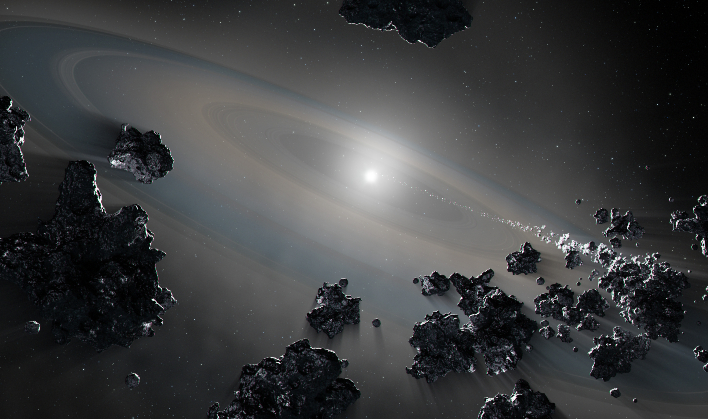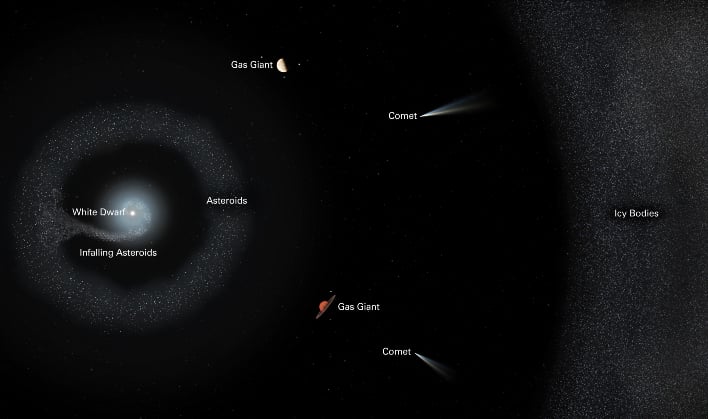Hubble Space Telescope Captures Dead Star Smashing Planets In A Stellar Demolition Derby

Astronomers used archival data from Hubble and other NASA observatories in analyzing the "case of cosmic cannibalism". The research helps to reveal the nature of evolved planetary systems and can help astronomers understand the makeup of newly forming systems. A white dwarf star is the remnant of a star like our own Sun following it shedding its outer layer and has since stopped burning fuel through nuclear fusion.
"We have never seen both of these kinds of objects accreting onto a white dwarf at the same time," stated Ted Johnson, lead researcher of the study. "By studying these white dwarfs, we hope to gain a better understanding of planetary systems that are still intact."
The total mass that is eventually consumed by the white dwarf in this study may not be more than the mass of an asteroid or small moon. One of the objects the star is consuming is likely metal-rich like an asteroid, while another is thought to be an icy body similar to the what we find at the outer edges of our solar system in the Kuiper belt.
"The best fit for our data was a nearly two-to-one mix of Mercury-like material and comet-like material, which is made up of ice and dust," remarked Johnson. "Iron metal and nitrogen ice each suggest wildly different conditions of planetary formation. there is no known solar system object with so much of both."
As a star like our own Sun enters into the last stages of its life, it will shed mass by puffing off its outer layers. One of the things that can be caused by this is the gravitational scattering of small objects like asteroids, comets, and moons by remaining large planets, such as Jupiter. This can end up creating a pinball effect as the surviving objects can be thrown into highly eccentric orbits.
"After the red giant phase, the white dwarf star that remains is compact, no larger than Earth. The wayward planets end up getting very close to the star and experience powerful tidal forces that tear them apart, creating a gaseous and dusty disk that eventually falls onto the white dwarf's surface," Johnson added.
Researchers are hoping to use the current findings to better understand what the ultimate end-game scenario will be for our own Sun, 5 billion years from now. At that time, Earth could be completely vaporized along with the other inner planets. It is also thought that Jupiter will disrupt the main asteroid belt, eventually causing those objects to fall onto the remnants of what the Sun will become.
Top Image Credit: NASA/ESA


